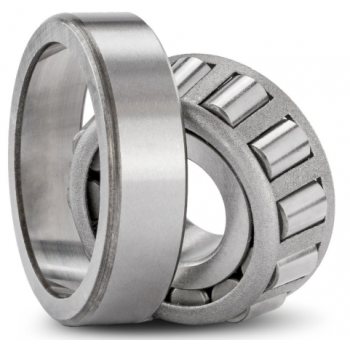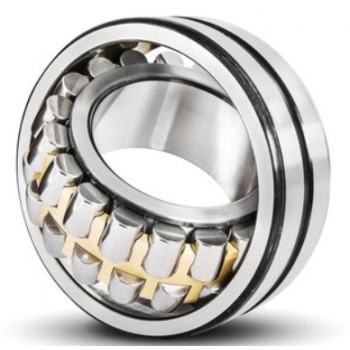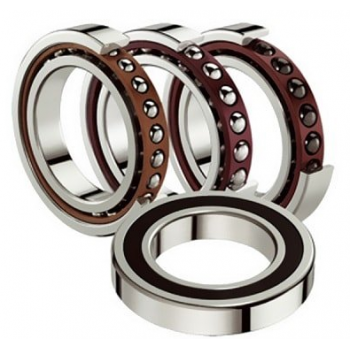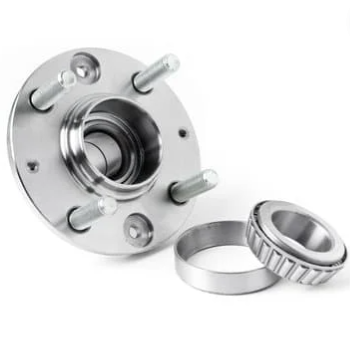Koyo Bearing
JTEKT North America's technologies contribute to the movement of diverse industries in the forms of Automotive Systems and Components, Bearings, Machine Tools and Mechatronics.
MANUFACTURING INNOVATIVE PRODUCTS AND BUILDING DYNAMIC LEADERS
JTEKT North America Corporation, part of JTEKT Corporation, was founded in 2006 through the merger of Koyo Seiko, Co., LTD and Toyoda Machine Works, LTD, forming a new global company combining modern technology
with a rich heritage of quality.
With more than 6000 associates and 24 facilities, including 15 manufacturing sites, 2 Technical Centers and 5 Distribution Centers, JTEKT North America manufactures a broad range of products under three solid brands: JTEKT
Automotive Systems, Koyo Bearings and Toyoda Machine Tools.
2012/1
A brand mark symbolizing integration of JTEKT, KOYO and TOYODA was established.
2012/10
The Iga Test Course was opened.
2012/10
Toyoda Machine Works Torsen Co., Ltd. was merged and acuired.
2012/10
Sekiya Seisakusho Co., Ltd. changed the corporate name to JTEKT YAMAGATA Corporation.
2014/3
JTEKT AUTOMOTIVA BRASIL LTDA. started production of the Electric power steerings.
2014/4
Large Size Bearing Engineering Development Center was opened.
2014/10
Koyo Sales Co., Ltd. was merged and acuired.
JTEKT GLOBAL
JTEKT Corporation was established in January 2006 through the merger of Koyo Seiko Co., Ltd., a world-class bearing manufacturer, and Toyoda Machine Works, Ltd., a machine tool manufacturer excelling in world-leading
machining technologies.
Combining the most advanced technologies and the manufacturing passion of both companies, today JTEKT manufactures innovative products that satisfy the most demanding customers all over the world.

This bearing is designed so that the apex of the tapered face on the raceway face of the cone cup intersects with a single point on the bearing center line. Suitable for applications with heavy load and impact load.
This type of bearings is designed so that the cups, cones and rollers have tapered surfaces whose apexes converge at a common point on the bearing axis. This type is suitable for applications involving heavy or impact loading.Taper roller bearings consist of an inner ring (cone), an outer ring (cup), a cage and rollers which are profiled to distribute the load evenly.
They have high radial and axial (thrust) load capacities at low to intermediate speeds. Taper roller bearings are available in single-row, two-row and four-row designs. With single-row bearings, the thrust load capacity is about 60% of the radial capacity. Double-row bearings have a greater radial load capacity and can handle thrust loads in both directions. The rollers can be configured in such a way that the contact lines between the roller and the race converge or diverge towards the axis of rotation. Diverging double-row bearings increase the rigidity of the shaft mounting, while converging bearings do not. Other configurations for double-row bearings feature a single outer ring and two inner rings, or two outer rings and a single inner ring. Four-row tapered roller bearings consist of four rows of alternating converging and diverging rollers.Most taper roller bearings are made of alloy steels or low-carbon steels. Some applications require the use of case-hardened or through-hardened, high-carbon, bearing-quality steel.
Single-row tapered roller bearings
The single-row tapered roller bearings are able to carry radial and axial load in one direction simultaneously. Because an axial component of force is produced when this type of bearing is loaded radially, two or more bearings are matched and used together.
There are the standard, medium and steep types which differ in contact angle size. Medium-tapered metric series bearings are identified by the supplementary code "C" which is added as a suffix to bearing numbers.Bearings whose cup width, cup smaller inside diameter and contact angle are determined in accordance with ISO 355 specifications are identified by the supplementary code "J" as a suffix.Cone assemblies and the cups of such bearings are inter-changeable with those of bearings produced abroad if the bearing numbers are the same.
Double-row tapered roller bearings
These bearings are divided into the TDO type which has one double cup and two single-row cones, and the TDI type which has two single-row cups and one double cone.
Both accommodate radial and axial loading in both directions. These two also carry moment loads; however, the TDO type is superior to the TDI type, because the distance between load centers is longer in the TDO type. The spacer of the TDO type, or the TDI type, pre-adjusts the internal clearance to provide proper operating clearance after mounting.Features and benefits:Forged steel vs. seamless tubingImproved fatigue lifeReduced noise vibrationSuper finished racewaysCrowned inner ring, raceway & rollers

Koyo Spherical roller bearings feature a large load rating and self-aligning capability. This type of bearing is suitable for low- or medium speed applications which involve heavy or impact loading. Spherical roller bearings are self-aligning, double-row, combination radial and thrust bearings. They use a spherical or crowned roller as the rolling element.
The outer ring contains a spherical race which allows for some misalignment of the shaft and housing. Spherical roller bearings are unequalled in their capacity for high loads and tolerance to shock loads, but have limited speed capabilities. They perform consistently, even under conditions of extreme speed, application-specific stress, and marginal lubrication.
The cage of a spherical roller bearing provides high dimensional accuracy and functionality. According to some estimates, spherical roller bearings have twice the running life of conventional bearings.
Therefore, spherical roller bearings are suitable for low/medium speed applications which involve heavy or impact loading. They come with cylindrical or tapered bores and can be supplied with adapter assemblies as well as withdrawal sleeves.These bearings are divided into R, RH(R) and RHA types, which differ in internal structure. Bearings with a tapered bore can be fit and removed easily using an adapter assembly or withdrawal sleeve.The ratio of the taper is identical among all bearing series:
240 and 241 series: 1:30 (supplementary code “K30”)
Others: 1:12 (supplementary code “K”).Spherical roller bearings are available as double-row, combination radial and thrust bearings. They use a spherical or crowned roller as the rolling element. The race in the outer ring is spherical in shape, which allows for some misalignment of the shaft and the housing. Spherical roller bearings are unequalled in their capacity for high loads and their tolerance to shock loads, but have limited speed capabilities. They perform consistently, even under extreme conditions, such as application-specific stress and marginal lubrication. The cage of a spherical roller bearing provides high dimensional accuracy and functionality. According to some estimates, spherical roller bearings have twice the running life of conventional bearings.Most spherical roller bearings are made of alloy steels or low-carbon steels. Chrome-plated products are also available. Some applications require the use of case-hardened or through-hardened, high-carbon, bearing-quality steel. High-carbon grades of steel do not require carburizing and can be case-hardened by induction heating or through-hardened by conventional heating methods. When low-carbon, carburized grades of steel are used, carbon is introduced after the spherical roller bearings are machined to a depth sufficient to produce a hardened case that can sustain bearing loads. The addition of carbon and alloys ensures the proper combination of a hard, fatigue-resistant case and a tough, ductile core.Bore size and outside diameter (OD) are important specifications to consider when selecting spherical roller bearings. The bore size is the bearing's smallest dimension. The outer diameter includes the bearing housing, but excludes the flange. Other important specifications for spherical roller bearings include overall width, rated speed (oil), static axial load, static radial load, dynamic axial load, and dynamic radial load. Static axial and static radial loads are, respectively, the maximum axial and radial loads that bearings can withstand without permanent deformation. Dynamic axial and dynamic radial loads are, respectively, the calculated axial and radial loads under which a group of identical bearings with stationary outer rings can endure for a rating life of 1 million revolutions of the inner ring.The R-type spherical roller bearing (two piece finger type) is contributing to a quiet operation by reducing the vibration. Our spherical roller bearings are also available with the following options:
Machined bronze retainer which is ideal for higher speed operation and ensures better performance under marginal lubrication conditions.
Asymmetrical roller design, which reduces sliding friction and has less tendency for roller skew while operating (R & RR types); this type uses two sets of convex asymmetrical rollers separated by a central inner ring rib.
Symmetrical roller design (RH Type Spherical Roller Bearing) with two rows of longer symmetrical roller and only a center guide ring instead of a rib.
R and RH Type Spherical Roller Bearings are also available with lubrication holes and grooves, which optimizes lubricant capability.
Self-alignment feature accommodates up to 2 misalignments.

Designed for high accuracy and excellent high-speed performance. Angular contact ball bearings are designed to carry combined loads: both axial and radial.Angular contact bearings are designed such that a contact angle between the races and the balls is formed when the bearing is in use.
The major design characteristic of this type of bearing is that one, or both of the ring races have one shoulder relieved, or higher than the other. In order for these bearings to function properly, they must be assembled with a thrust load. This loading (or preload) creates a line of contact (or contact angle) between the inner race, the ball and the outer race. The preload can be built into the bearing or created when the bearing is inserted into an assembly. The contact angle varies from 15° to 40° and is measured relative to a line running perpendicular to the bearing axis. Angular contact bearings are unidirectional thrust bearings that can withstand heavy thrust loads and moderate radial loads.Important dimensions to consider when searching for angular contact bearings include design units bore, outside diameters, and outer ring width. Design units can be in either inches or metric units. Some manufacturers may specify parts in both.
The bearing industry uses a standard number system for bearings with metric diameter bores.
AVAILABLE AS SINGLE OR DOUBLE ROW, MATCHED PAIR AND FOUR POINT CONTACT.
Designed for high accuracy and excellent high-speed performance. Angular contact ball bearings are designed to carry combined loads: both axial and radial.Angular contact bearings are designed such that a contact angle between the races and the balls is formed when the bearing is in use. The major design characteristic of this type of bearing is that one, or both of the ring races have one shoulder relieved, or higher than the other. In order for these bearings to function properly,
they must be assembled with a thrust load. This loading (or preload) creates a line of contact (or contact angle) between the inner race, the ball and the outer race.
The preload can be built into the bearing or created when the bearing is inserted into an assembly. The contact angle varies from 15° to 40° and is measured relative to a line running perpendicular to the bearing axis. Angular contact bearings are unidirectional thrust bearings that can withstand heavy thrust loads and moderate radial loads.Important dimensions to consider when searching for angular contact bearings include design units bore, outside diameters, and outer ring width. Design units can be in either inches or metric units. Some manufacturers may specify parts in both. The bearing industry uses a standard number system for bearings with metric diameter bores. For bore sizes 04 and up multiply by 5 to obtain the bore in millimeters. Important operating specifications to consider when searching for angular contact bearings include rated speed, static radial load, and dynamic radial load. The rated speed of a bearing running with grease lubrication is lower than that of a bearing with oil lubrication. The static radial load is the maximum radial load a bearing can endure without excessive permanent deformation. The dynamic radial load is the calculated constant radial load, which a group of identical bearings with stationary outer rings can theoretically endure for a rating life of 1 million revolutions of the inner ring.Manufacturers typically assign an ABEC rating to bearings. ABEC (Annular Bearing Engineers' Committee) ratings classify different accuracy and tolerance ranges for bearings. The higher the ABEC number the tighter the bearing tolerances. Please consult the tables in the search form for Angular Contact Bearings for tolerances and other rating equivalents.Angular contact bearings can have a number of different styles of seals or shielding. Seals and shields provide protection from contamination and serve as a retainer for lubricant. Seals provide better protection and lubricant containment than shields, but have lower maximum speed capabilities. The different types include single/double seal or single/double shield. Angular contact bearings may be constructed of special materials including stainless steel, plastic, and ceramic hybrid. They may also be plated; common plating materials are cadmium and chrome.Bearing design for angular contact bearings can be one directional thrust, double directional thrust, double row, double row maximum capacity angular, duplex thrust, and four-pointed contact. Thin-section bearings have small cross-sections with respect to their diameter. Bearings with ball screw support are specially designed for use in ball screw or lead screw applications. Some bearings may also be flanged. Angular contact bearings may have a variety of lubrication options. They can be re-lubricated, pre-lubricated, or have solid lubrication.Angular contact ball bearings are suitable for applications which require high accuracy and good high-speed performance. This type of bearing is designed to carry a combined load.
Single-row angular contact ball bearings and matched pair angular contact ball bearings
The standard contact angles are 15°, 30° and 40°. They are identified, respectively, by the supplementary codes "C", "A" (omitted) and "B". Bearings with a smaller contact angle are more suitable for applications involving high-speed rotation. Those with a larger contact angle feature superior axial load resistance. Angular contact ball bearings are often preloaded to enhance their rigidity and rotating performance. For high-precision matched pair angular contact ball bearings of class 5 or higher, which are used in machine tools and other precision equipment, the standard preload is specified in three levels: light (L) , medium (M) , and heavy (H) .
When this type of bearing is loaded radially, an axial component of force is produced. In this case, two (facing one another) or more bearings are matched and assembled.
Double-row angular contact ball bearings
This type of bearings consists of two single-row angular contact ball bearings matched back-to-back, with inner and outer rings integrated.
Four point contact ball bearing
These bearings have a contact angle of 35° and an inner ring divided into two annular pieces. They are suitable for applications that involve either axial or combined loading, where the axial load makes up the major part of the load. Another advantage is that they are able to support axial load and a certain degree of radial load. Each rolling element is in contact with each of the inner and outer rings at a single point. Both contact points lie on the contact angle line. The line runs to either the right or left depending on the direction of the axial load.It is essential to carefully examine the application conditions, especially load magnitudes, when choosing appropriate four-point contact ball bearings. Therefore, you are invited to consult JTEKT if you are considering installing this type of bearing in your product(s).

Koyo bearings are one of the most commonly used types of bearings in the world. They are used in a wide variety of applications, including automotive, aerospace, and industrial. koyo Singapore bearings are made from high-quality materials and are designed to last for a long time. However, like all products, they will eventually need to be replaced. In this blog post, we will explore the different types of koyo bearings and their applications. We will also provide a brief introduction to the company and its history.
What are koyo bearings?
koyo malaysia bearings are a type of bearing that is widely used in a variety of industries. There are many different types of koyo bearings, each with their own unique set of features and benefits. Koyo bearings can be used in a wide variety of applications, including automotive, industrial, and more.
Bearing koyo are made from high-quality materials that can withstand a variety of conditions. Koyo bearings are designed to provide long-lasting performance and durability. Koyo bearings can be found in a wide variety of sizes to suit any application needs.
Koyo bearings are an essential component in many industrial and automotive applications. Koyo bearings can help to improve efficiency, reduce downtime, and increase productivity. Contact us today to learn more about koyo bearings and how they can benefit your business or application.
Who are the distributors of Koyo bearings?
Koyo is one of the world's leading manufacturers of bearings and other automotive components. But who are the distributors that sell Koyo products? Besides the important koyo distributors in Singapore there are Thailand koyo, Mexico koyo, UAE koyo, koyo bahrain, dubai koyo etc.
Koyo Singapore Bearing (Pte) Ltd is one of the leading distributors of Koyo bearings in Singapore. With more than 30 years of experience in the bearing industry, we are able to provide our customers with quality products and koyo services. We have a wide range of Koyo bearings in stock, ready for immediate delivery.
The different types of koyo bearings
There are many different types of koyo bearings, each with its own unique set of features and applications. Here is a brief overview of the most common types:
-Radial ball bearings are the most common type of koyo bearing. They are used in a wide variety of applications, from automotive to industrial machinery. Radial ball bearings have a single row of balls, which makes them ideal for use in low-load, high-speed applications.
-Angular contact ball bearings are designed for use in high-load, high-speed applications. They have a higher load capacity than radial ball bearings and can handle both thrust and radial loads. Angular contact ball bearings are available in both single and double row configurations.
-Spherical roller bearings are designed for use in heavy-duty applications where shock loads and misalignment are a concern. Spherical roller bearings have a spherical outer ring that can rotate independently of the inner ring. This type of bearing is available in both sing
How koyo bearings are made?
Koyo bearings are made of high-quality steel and can withstand a variety of loads and rotations. The manufacturing process begins with a blank steel ring that is cut to size. The ring is then heated and formed into the desired shape. Once cooled, the bearing is machined to precise tolerances and undergoes a final inspection before being shipped to the customer.
How do koyo bearings work?
Koyo bearings are one of the most popular types of bearings used in a variety of industries. As their name suggests, they work by using koyo, or Japanese ball bearings, to reduce friction between moving parts. This allows for smoother operation and increased efficiency in machinery and equipment. In addition to reducing friction, koyo bearings can also help to absorb shock and vibration, making them ideal for use in high-stress environments.
Koyo bearings are one of the most widely used types of bearings in the world. They are used in a variety of applications, including automotive, mining, construction, and manufacturing. Koyo bearings are typically made from high-quality steel and use precision manufacturing techniques to ensure a long lifespan.
Koyo bearings work by providing a smooth surface for moving parts to rotate on. The bearing's inner and outer rings hold the balls in place, while the cage prevents them from colliding with each other. This design allows for low friction and high efficiency operation. Koyo bearings are available in a wide range of sizes and designs to suit different applications.
The benefits of using koyo bearings
There are many benefits to using koyo bearings. They are durable and have a long service life, even in tough operating conditions. They are also low maintenance and easy to install. Additionally, koyo bearings can help improve machine efficiency and reduce downtime.
Koyo bearings can be used in a wide variety of industries and applications. Some of the benefits of using koyo bearings include:
-Increased bearing life
-Improved performance
-Reduced maintenance costs
-Improved reliability
Koyo bearings are used in a variety of industries including automotive, aerospace, construction, and more. In each of these industries, koyo bearings provide superior performance and increased reliability.
Koyo bearings application and introduction
Koyo bearings are used in a wide variety of applications. They are available in a wide range of sizes and designs to meet the requirements of different industries.
Koyo bearings are used in automotive, aerospace, industrial and other applications. They are available in both standard and custom designs to meet the specific needs of the application.
Koyo bearings are made from high quality materials and are designed for long service life. They are backed by a team of experts who can provide support and technical assistance when needed.
How to choose the right koyo bearings?
There are a few things to consider when choosing the right koyo bearings for your application. The first is the load capacity. You need to make sure that the bearings you select can handle the loads that will be placed on them. The second is the speed rating. Bearings are rated for maximum speed, and you need to make sure that the bearings you select can handle the speeds that will be required of them. The third is the operating temperature range. You need to make sure that the bearings you select can handle the temperatures that will be present during operation.
The fourth factor to consider is the environment in which the bearings will be used. If the bearings will be used in an environment where they will be exposed to dirt, dust, or other contaminants, you need to make sure that they are rated for such conditions. The fifth factor to consider is vibration resistance. If the bearings will be subjected to high levels of vibration, you need to make sure that they are rated for such conditions.
Once you have considered all of these factors, you can then narrow down your choices and select the best koyo bearings for your application.
Koyo bearing maintenance
Koyo bearings are one of the most widely used types of bearings in the world. They are used in a variety of industries including automotive, aerospace, and industrial machinery. Koyo bearings are known for their quality, durability, and performance.
While koyo bearings are built to last, they still require some maintenance to ensure they continue to perform at their best. Here are a few tips on how to keep your koyo bearings in top condition:
- Check the bearing regularly for wear or damage. If you notice any problems, replace the bearing immediately.
- Keep the bearing clean and free of debris. A build-up of dirt or other materials can cause premature wear or failure.
- Make sure the bearing is properly lubricated. This will help reduce friction and extend the life of the bearing.
By following these simple tips, you can ensure your koyo bearings will provide years of trouble-free operation.
Conclusion
Koyo bearings are one of the most popular types of bearings on the market today. They are used in a wide variety of applications and industries, and their popularity is only increasing. If you are looking for a high-quality bearing that will last for years to come, then Koyo is definitely a brand you should consider.
Koyo bearings work by using a rolling motion to reduce friction between the bearing and the shaft. The bearings are typically made of steel and can be found in a variety of sizes. The most common type of koyo bearing is the ball bearing, which is used in applications where there is a need for high precision and low noise.

















